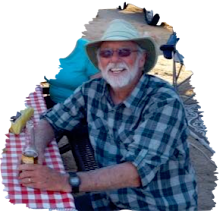
The Indians said that after making the Earth, the Great Spirit simply dumped all the leftover rocks on the Big Bend. Spanish explorers, less intimate with the landscape, merely dubbed this "the uninhabited land." To come to know this land of desert and mountains cut through by the Rio Grande "the big river" is but to grasp a larger appreciation of the unknown.
Prehistoric Native Americans made their homes here at least 10,000 years ago and perhaps earlier. These people were not farmers but hunters and gathers who took only what this country offered on its own.
Hundreds of Chihuahuan Desert plants were useful to prehistoric people for food or medicine. Their diet included the heart of the sotol and lechuguilla plants; the fruit and blossoms of yucca; the fruit and young pads of pricklypear; mesquite and acacia beans; and many other native plants. They fashioned baskets and sandals from lechuguilla fiber and yucca leaves. For hunting they used the atiati, a throwing stick that propelled stone-tipped darts to kill deer, rabbits and other game. Like us they needed not only food but valuable sources of drinking water.
In the 1500s, the Spaniards enslaved the Native Americans and substantially changed their culture. Spanish explorers crossed the Rio Grande in the 16th and 17th centuries in their search for gold and silver and fertile lands.
Apaches moved in sometime in the 1700s, pushed southward by the Comanches. The Comanche Indians also crossed the river during the 19th century, traveling to and from Mexico with their raiding parties. A full moon in the Big Bend area is still known as a "Comanche Moon" as the Comanche waited for the full moon to make their regular river crossings.
The Apaches were capable of resisting the Spaniards, who in the 1700s began to release their tenuous hold of this area. In the 19th century, driven by pressures on hunting territories from encroaching Anglo-American homesteaders, the Comanches were forced southward. Mexican settlers occupied the Big Bend by the early 1800s, and their isolated communities became the targets of raids by nomadic Comanche warriors.
Big Bend National park is a hiker's paradise containing the largest expanse of roadless public lands in Texas. More than 150 miles of trails offer opportunities for day hikes or backpacking trips.
Elevations range from 1,800 feet at the eastern end of Boquillas Canyon to 7,825 feet atop Emory Peak in the Chisos Mountains. These elevation changes produce an exceptional variety of plants, animals, and scenic vistas.
Because they receive more precipitation than the rest of the park, the Chisos are often referred to as a temperate island in a desert sea. Since the Chisos are the most popular hiking area in Big Bend National Park, designated campsites help reduce damage to this delicate environment.
The scenery varies widely ranging from the Rio Grande floodplain to arid badlands to sotol grasslands to rugged volcanic peaks. The desert provides virtually any backcountry experience sought by a hiker. Some areas are often used; others, more isolated, are seldom used and reflect a true wilderness setting.
The dry desert air quickly uses up the body's water reserves. It is recommended that you carry a minimum of one gallon of water per person per day in the summer, slightly less in the winter. For half-day hikes, carry at least 2 quarts per person. Springs and tinajas (depressions in rock where water collects) are unreliable and may be unsafe to drink.
All overnight backpackers must obtain a free Backcountry Use Permit. Permits are issued in person only on a first come, first served basis up to one day in advance of departure.



No comments:
Post a Comment